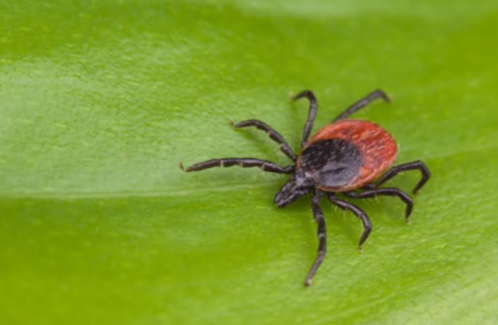
As we approach summer and the warm weather that we all yearn for, there is one thing to be cautious of- ticks. Ticks are parasitic creatures that feed on the warm blood of their host, and unfortunately, they are fairly common in Pennsylvania. There are four common ticks in Pennsylvania: the blacklegged tick, American dog tick, Lone star tick, and the Groundhog tick- all of which can be found in various areas ranging from heavily forested areas to open locations such as grassy fields. The most common of these parasites is the blacklegged tick, leading to the highest number of Lyme Disease cases reported due to them.
Lyme Disease is a bacterial infection that is transmitted to humans through the bite of an infected tick. Ticks become infected by feeding on a diseased animal first, and later transfers the bacterium Borrelia burgdorferi to humans. After a person is infected with the bacterium, symptoms can start to show as early as 3 days and as late as 30 days. Early symptoms can include a bullseye rash at the site of the bite, a fever, a headache, joint pain, fatigue, and swollen lymph nodes. As the disease develops, later symptoms may include arthritis, inflammation of the heart muscle, and neurological problems such as facial paralysis and meningitis. However, luckily for us, there is a treatment for the disease: Lyme disease can be cured with a course of antibiotics!
Unfortunately, Lyme disease is just one of the many diseases that you can get from the many different tick species that live in Pennsylvania. Though other diseases are less common than Lyme disease, you could possibly get Rocky Mountain Spotted Fever or Babesiosis if bitten by a tick. Rocky Mountain Spotted Fever can lead to organ failure, coma, or death if not treated right, while those affected by Babesiosis typically experience mild to no symptoms.
While it may seem frightening to put yourself at risk for these diseases, there are things you can do to avoid getting bitten by a tick and potentially getting infected with one of the diseases listed above. One means of doing so is minimizing skin exposure when in wooded areas by wearing protective clothes (such as long sleeves and closed-toe shoes). You can also wear lighter colored clothing to make ticks easier to spot. One of the most effective strategies, though, is using insect repellent. When doing so, make sure to apply the repellent to skin and clothes while following the instructions on the label. Make sure to regularly check your body as well as pets (especially if they are outside often). To kill ticks on clothing, make sure to wash your clothes in hot water and dry them on high heat.
Though you should be aware of and watch out for ticks, by no means should you skip out on activities to avoid them. Ticks are no reason to miss all the fun when it gets nice and warm. So, make sure you enjoy the summer and spring while it is here!







